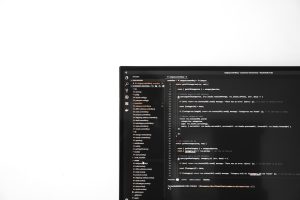
In the age of digital advertising, businesses of all sizes are exploring how to leverage programmatic ads to streamline their campaigns and maximize reach. Ticketmaster, as one of the largest ticketing platforms in the world, is no exception when it comes to tapping into the power of programmatic advertising. If you’re wondering whether you can run programmatic ads for Ticketmaster’s website or events, the answer is both straightforward and multifaceted. Below, we’ll provide a comprehensive guide to help you understand the landscape and implement a strategy that works effectively.
What Are Programmatic Ads?
Before diving into the specifics of advertising for Ticketmaster, it’s important to clearly understand what programmatic ads are. In simple terms, programmatic advertising refers to the automated buying and selling of online ad space. The process uses sophisticated algorithms and data to place your ads in front of the right audience at the right time, optimizing ad performance and eliminating much of the repetitive labor traditionally involved in ad campaigns.
Programmatic advertising offers numerous benefits, including:
- Highly targeted ad placements.
- Real-time optimization based on performance metrics.
- Cost efficiency compared to traditional ad buying.
Can You Legally Run Programmatic Ads for Ticketmaster?
The short answer is: it depends. If you are a promoter, venue operator, or event organizer working directly with Ticketmaster to sell tickets for your events, you are typically allowed to market those events through programmatic advertising. However, there are some key considerations:
- Permission and Relationship: Ticketmaster owns rights to its name, branding, and intellectual property. Ensure you have a formal business relationship or written permission to advertise events hosted on their platform.
- Platform Compliance: Ad networks and programmatic platforms, such as Google Ads or The Trade Desk, have stringent rules for promoting ticketed events. You must follow these rules to avoid ad disapprovals or account restrictions.
- Ticketmaster’s Ads Policy: Most major ticketing platforms have their own advertising guidelines and branding restrictions. Check Ticketmaster’s terms of service to avoid potential conflicts.
Setting Up Your Programmatic Campaign
Once you have confirmed you’re authorized to promote Ticketmaster-hosted events, you can follow these steps to set up your programmatic campaign:
Step 1: Identify Your Target Audience
The cornerstone of any effective programmatic campaign is a well-defined target audience. Use data analytics tools to identify demographics, behavior patterns, and interests relevant to your event. For instance, if you’re promoting a music festival, focus on fans of the artists performing or individuals with trackable interest in similar events. Many platforms allow audience segmentation through social media activity, location, and even specific websites users have visited.

Step 2: Choose a Programmatic Platform
Selecting the right programmatic platform is crucial. Popular options include:
- Google Display & Video 360: Offers access to a large network and robust targeting options.
- The Trade Desk: Known for its high scalability and customization abilities.
- Amazon DSP: Great if you also want to incorporate Amazon’s consumer data into your advertising strategies.
Your choice will depend on budget, technical expertise, and the kind of reach you’re seeking to achieve.
Step 3: Creative Development
Programmatic ads still require high-quality, compelling visuals and messaging to attract clicks. Ensure your advertisements are visually engaging and in line with the tone of the event. Include direct call-to-actions (CTAs) such as “Buy Tickets Now” or “Reserve Your Spot Today.” However, avoid making your design overly complicated, as many placements are limited in size and format.

Step 4: Monitor Performance and Optimize
Once your campaign is live, tracking performance metrics should become a daily activity. Monitor important key performance indicators (KPIs) such as:
- Impressions – to understand reach.
- Click-Through Rates (CTR) – determine effectiveness of your ad creatives.
- Conversion Rates – measure ticket sales after clicks.
Use these insights to tweak underperforming ads or reallocate your budget towards the highest-performing placements.
Best Practices for Running Ticketmaster Ads via Programmatic
To ensure your campaign delivers strong results, follow these best practices:
- Leverage Retargeting: Retarget users who’ve visited a Ticketmaster event page but didn’t complete their ticket purchase.
- Use Geo-Targeting: Narrow your audience by region if your event is location-specific.
- Respect Branding: Ensure that your creative assets align with Ticketmaster’s visual style guidelines, if applicable.

Things to Watch Out For
While programmatic ads for Ticketmaster-related events can generate impressive results, there are potential pitfalls to avoid:
- Unnecessary Overspending: Use cost caps and bidding strategies to keep costs under control.
- Ad Content Violations: Ensure every ad adheres to both Ticketmaster’s and your programmatic platform’s policies.
- Overly Broad Targeting: Casting too wide of a net can dilute ad relevance and reduce ROI.
Conclusion
Running programmatic ads for events hosted on Ticketmaster’s platform can be an excellent way to amplify ticket sales and extend your marketing reach. However, it requires careful planning, adherence to policies, and a focus on targeting the right audience. By leveraging sophisticated programmatic tools and following the steps outlined in this guide, you can create a highly effective ad campaign that delivers both clicks and conversions.






